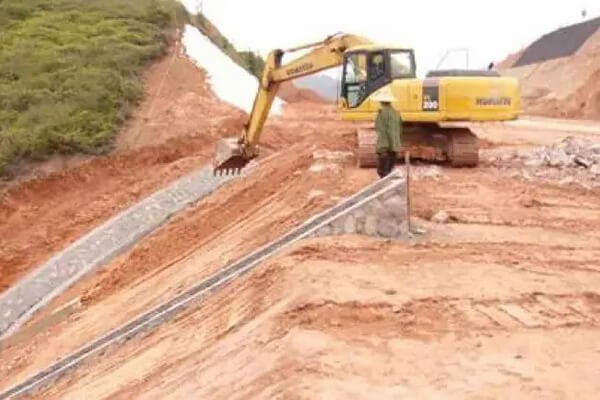Published: 8 June 2022
Description
As a branch of geotechnical engineering, slope engineering is divided into natural slopes and artificially filled slopes. The cutting slope has been washed and ground by nature for a long time, and the impact on the construction project is negligible. However, we need to pay more attention to the stability of the slope after excavation. The obvious settlement will occur on the artificial filling slopes, which will cause damage to the construction project. Therefore, settlement and stability are the most important indicators in filled slopes.

The rock and soil mass is developed by joints and fissures, or composed of discontinuous media such as loose particles, or composed of solid, liquid, and gas phases with different proportions and different interactions, and formed by the time-effect of changing properties over time and space. Therefore, it is of great discontinuity, variability, and heterogeneous. The above discontinuity, heterogeneity, and variability have created three major engineering problems of rock and soil infiltration, strength, and deformation, which have become the direct research and governance objects of geotechnical engineering and disaster engineering.
The two key indicators of soil slope - settlement and stability, which are most concerned by engineers, are closely related to the strength, penetration, and deformation of the soil, and the three affect each other. Therefore, any external factors that affect the balance among the three will cause changes in the values of key indicators of the slope.
The strength of soil is essentially the friction force generated by the contact friction between soil particles and the cohesion force generated by the interconnection between the particles. The entry of water leads to an increase in soil moisture content, which lubricates the frictional force between soil particles, resulting in matrix suction, electrostatic attraction, van der Waals force, and weakening of mineral cementation between particles, etc. The effective stress of the soil decreases, which leads to the deformation of the soil, and even causes the disintegration of the soil skeleton to form fluid plastic bodies and debris flows. This is the effect of water infiltration on the deformation and strength of the soil. Reasonable drainage engineering settings for soil slopes can not only effectively reduce the infiltration of surface water into the slope body and reduce the physical and mechanical parameters of the slope body, but also effectively reduce the adverse effects of hydrostatic pressure or dynamic water pressure on the slope body through the interception and drainage of groundwater, and By increasing the effective stress of the slope, the soil is consolidated and the physical and mechanical parameters of the slope are improved, which also improves the strength and deformation resistance of the slope.
For the filled body with fine particles or even clay particles, the proportion of instantaneous settlement is relatively small, and it is more the main consolidation settlement under the action of drainage consolidation under the action of additional stress and the increase of effective stress. It takes a long time to complete, which requires a reasonable control of the relationship between the filling rate and soil consolidation to prevent the slope from becoming unstable under the action of excessive overburden pressure and excess hydrostatic pressure due to the excessive filling rate. This is the reason for the rational use of osmotic consolidation.
For the filled body of coarse-grained soil, especially for the rock-filled roadbed with good lithology, the proportion of instantaneous settlement will be relatively large, and the so-called primary consolidation and secondary consolidation will be long and affect the fill slope Less affected. Reasonable compactness is very beneficial to improving the friction strength of the fill, and it is also very beneficial to reducing the drag force and driving force formed by groundwater on coarse particles, thereby helping to control the deformation of the fill slope and improve its stability. Therefore, the stability and settlement of the reasonable coarse-grained filling subgrade are better than those of the fine-grained filling, which is also the reason why the stable slope rate of the rock-filled embankment is steeper than that of the fine-grained filling embankment.
To sum up, for soil slope control, the concept of "preventing small areas at an early stage and water control before slope management" should be implemented, and anchoring support should be added at the same time. Sinorock is a professional rock bolt manufacturer in China. If you need self-drilling rock bolts, please contact us at [email protected].
Date Conducted
June 2022
Contributors
Jack Xin
Owned by company
Luoyang Sinorock Engineering Material Co Ltd
Categories
Slope Stabilization
Keywords
rock bolt
